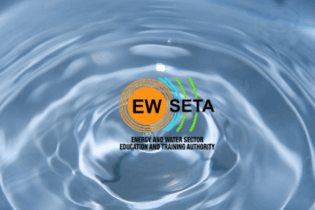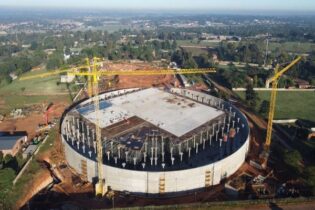Two-year project is due for completion next July.
The water use verification project underway in the Upper Orange Water Management Area is proceeding apace and has entered the end of the validation phase, says Ashwin Seetal, specialist sector consultant: Water Management, SSI Engineers and Environmental Consultants. The project is one of a series of water resource management projects underway countrywide under the auspices of the Department of Water Affairs (DWA) and forms a critical basis for other aspects of water management envisaged in the implementation of South Africa’s National Water Act (Act 36 of 1998). The water use verification project in the Upper Orange Water Management Area (WMA) commenced in July last year and is due for completion next July. A paper on the water use verification project in the Upper Orange WMA was presented by Vernon Blair of the DWA: Free State region, at the Orange River Basin Symposium at the University of the Free State in Bloemfontein June this year. Supporting authors were Seetal and E. Maritz (consultant’s project leader from MHPGeospace). The project links with other water sector processes, including: * Institutional establishment and transformation, comprising the establishment of Catchment Management Agencies (CMAs) and the transformation of Irrigation Boards (IBs) into Water User Associations (WUA). * Compliance, monitoring and enforcement (CME), which addresses unlawful water use and ensures compliance with water use authorisation conditions. * Water conservation and water demand management, which encourages the efficient use of water resources. * Water availability assessment studies, which reconcile water demands with its availability. * Reserve determinations and classification, which comprises balancing water use requirements with environmental sustainability needs to protect water resources. * Water allocation reform, which redresses historical allocation imbalances (issues of social justice), and ensures effective water resources management. * The operations of the DWA Water Trading Entity with the primary objective of making water use billing and water revenue management more efficient and accountable. The paper indicates that the project “provides a foundation for effective water management (in the management and control of water use) and is a critical activity in implementing the National Water Act. The project is important because it will confirm the true extent of water use in the water management area. Without this project, there would be continued unreasonable or unsubstantiated claims to water entitlements, and unfair or disproportionate use of water from water resources. This is particularly problematic in areas where there is not enough water for all water users.“The validation and verification project is also the basis of the Water Allocation Reform (WAR) Programme by confirming how much, where and by whom water is being used and the lawfulness of this use. It helps to identify potential unlawful users of water and supports efforts to address and manage unlawful water uses.”
Among additional project benefits identified in the paper are an improved quantification of the availability of water for WAR and for social and economic development purposes in the catchment. This will allow the DWA in the region to engage more effectively with provincial and local governments to address their current and future water requirements, especially the availability of water for development purposes as described in the Provincial Growth and Development Plan (PGDP), Integrated Development Plan (IDP) and Local Economic Development Plan (LED). In his presentation, Blair states that validation is a 16 step process starting with water use registration and remote sensing analyses and culminating in user interaction meetings before entering the verification phase, a seven step process that is initiated with feedback from users, compilation and review, and ends with final reporting, data handover and the final water user report-back workshop. The various phases of the process and the project start with water use registration (which is not part of this particular project), moves through water use validation and verification, the public participation stakeholder engagement process (a legal requirement), preliminary findings and outcomes comprising WARMS (water resource management) and validation assessments, as well as calculations of water storage sites and abstraction for irrigation purposes. The author says among the validation process challenges are missing/outdated property and ownership information; locating the necessary legal documents and especially those issued under the previous Act such as water court orders, sharing agreements and permits; and the fact that the SAPWAT (water irrigation requirement) model relies on some assumptions and estimations regarding variables such as crops and irrigation types. Blair remarks that multiple forms of communication are essential for general communication and information transmission. Communication tools must include newsletters, letters, smses, newspapers, websites, presentations at gatherings and telephone contacts. “The ‘visibility’ of the project is crucial for stakeholder awareness and participation. Flexible approaches to engaging with stakeholders are necessary when dealing with the large numbers of users dispersed over a very wide area. He identifies the key success factors as: – meticulous planning (project structure, design and strategy) – thorough and timeous preparation (workflow management) – efficient implementation (performance) – careful monitoring (evaluation and oversight). Blair found that because the project is multi-disciplinary, team configuration and coordination are vital; project desktop results must be tested and confirmed with water users; flexible implementation approaches are necessary to accommodate changes in client and stakeholder requirements and project dynamics; the ‘visibility’ of the project is crucial for stakeholder awareness and participation; and stakeholder inputs are essential.






